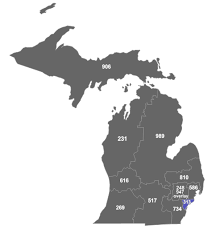
Introduction
The importance of maps has surged in recent years, particularly with advancements in technology and the increasing reliance on digital navigation systems. From GPS to interactive online maps, understanding how we use and interpret maps today is crucial for a variety of fields, including urban planning, transportation, and tourism.
The Evolution of Mapping Technology
Traditionally, maps were physical representations that needed to be updated with each geographical discovery or shift in political boundaries. However, the advent of digital mapping tools such as Google Maps, OpenStreetMap, and various mobile applications has revolutionised the way we think about maps. According to Statista, the global market size of digital maps was valued at approximately $7.4 billion in 2020 and is expected to grow to $22 billion by 2026.
Digital Mapping in Daily Life
With over 1 billion users relying on Google Maps monthly, the app has become integral in daily commutes, travel planning, and even local exploration. The rise of navigation apps facilitates not only route planning but also integration with public transport schedules, real-time traffic updates, and even cycling and walking directions. This accessibility has made maps more valuable than ever, as they cater to a broad audience seeking convenience and real-time information.
Maps in Urban Planning
Urban planners have also embraced digital mapping techniques for analysing spatial data and making informed decisions. Geographic Information Systems (GIS) allow planners to model scenarios, predict urban expansion, and assess environmental impacts. For instance, cities like London and New York are harnessing the power of GIS to deal with challenges such as traffic congestion and housing shortages effectively.
Conclusion
The resurgence of map usage is a testament to the enduring need for spatial awareness in our increasingly complex world. Digital maps empower users, provide essential services, and support urban development, making them indispensable tools in today’s society. As technology continues to evolve, the role of maps will inevitably expand, promising exciting innovations for navigation, planning, and beyond. With the digital mapping market projected to grow significantly, individuals and businesses alike should stay informed about their potential applications and advancements.
You may also like

The Impact of Snapdragon Processors on Mobile Technology

The Impact of Spotify on the Music Streaming Landscape
